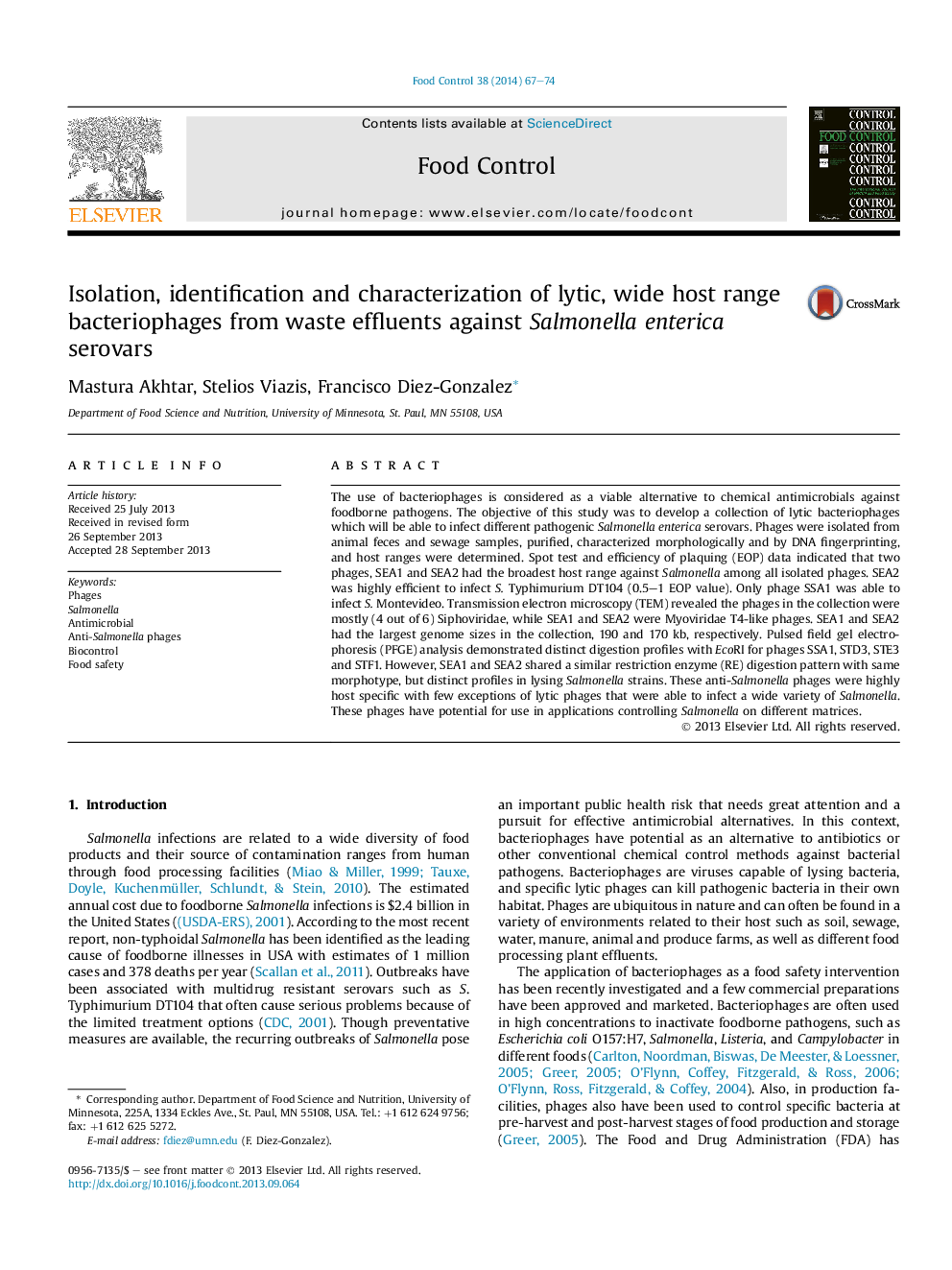| کد مقاله | کد نشریه | سال انتشار | مقاله انگلیسی | نسخه تمام متن |
|---|---|---|---|---|
| 6392034 | 1628424 | 2014 | 8 صفحه PDF | دانلود رایگان |
- Bacteriophages were isolated and characterize to determine as an alternate method to biocontrol Salmonella enterica.
- SEA1 and SEA2 were identified as lytic phages and showed lysis against a wide range of Salmonella serovars.
- Most bacteriophages were very specific towards the infecting ability and lysed only the host Salmonella serovars.
The use of bacteriophages is considered as a viable alternative to chemical antimicrobials against foodborne pathogens. The objective of this study was to develop a collection of lytic bacteriophages which will be able to infect different pathogenic Salmonella enterica serovars. Phages were isolated from animal feces and sewage samples, purified, characterized morphologically and by DNA fingerprinting, and host ranges were determined. Spot test and efficiency of plaquing (EOP) data indicated that two phages, SEA1 and SEA2 had the broadest host range against Salmonella among all isolated phages. SEA2 was highly efficient to infect S. Typhimurium DT104 (0.5-1 EOP value). Only phage SSA1 was able to infect S. Montevideo. Transmission electron microscopy (TEM) revealed the phages in the collection were mostly (4 out of 6) Siphoviridae, while SEA1 and SEA2 were Myoviridae T4-like phages. SEA1 and SEA2 had the largest genome sizes in the collection, 190 and 170Â kb, respectively. Pulsed field gel electrophoresis (PFGE) analysis demonstrated distinct digestion profiles with EcoRI for phages SSA1, STD3, STE3 and STF1. However, SEA1 and SEA2 shared a similar restriction enzyme (RE) digestion pattern with same morphotype, but distinct profiles in lysing Salmonella strains. These anti-Salmonella phages were highly host specific with few exceptions of lytic phages that were able to infect a wide variety of Salmonella. These phages have potential for use in applications controlling Salmonella on different matrices.
Journal: Food Control - Volume 38, April 2014, Pages 67-74
